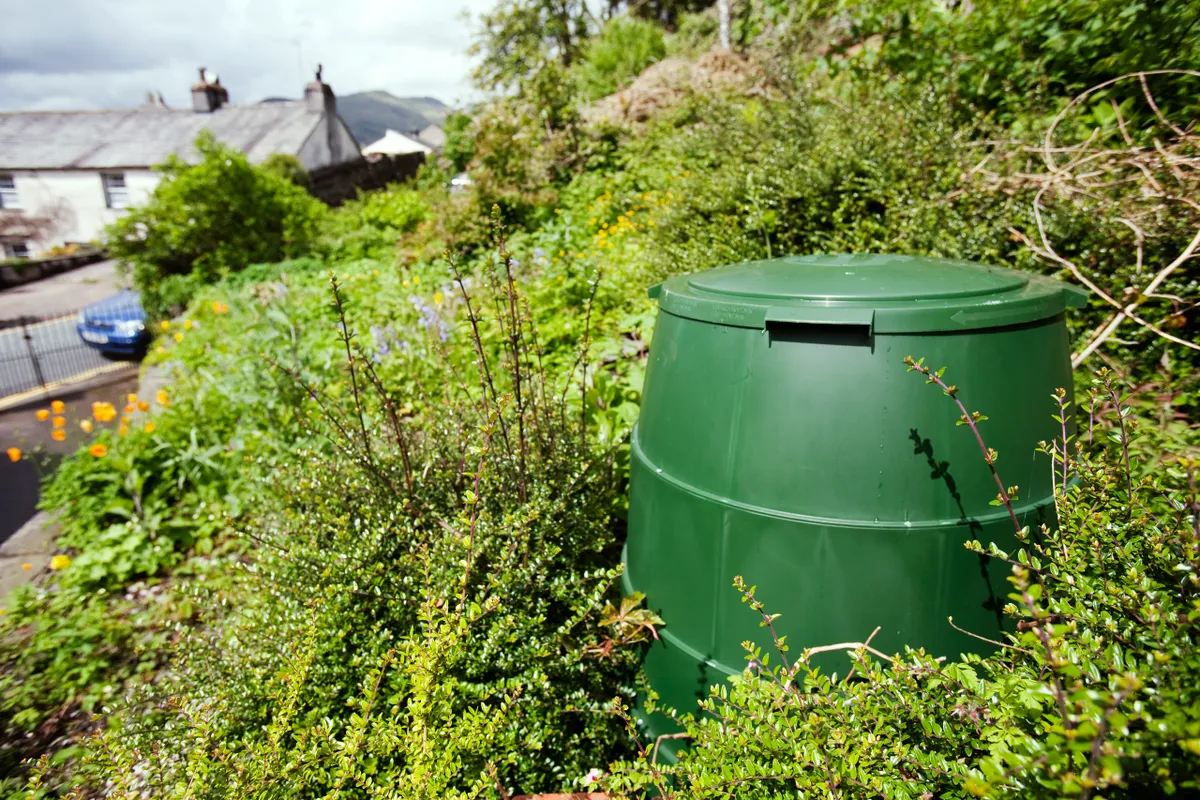Most of us know about traditional methods of composting using a mixture of leafy greens and woody browns, turned regularly. Composting builds habitats for worms and other beasties and feeds the microbes that live in our soil as well as introducing new ones that break plant material into crumbly organic matter and help unlock and release stored nutrients. It also aids water retention and improves soil structure – the list goes on and on. It can be made in a multitude of ways, limited only by garden space.
Composting also has a greater role to play by enabling us to reduce our landfill waste. Municipal waste has increased by three per cent every year since 1996. Sent to landfill, it releases methane, which contributes to global warming. Landfill is responsible for 22 per cent of the total methane released in the UK alone. Some landfill sites do have methods to catch methane and councils do compost food waste, but this all requires fuel, energy and transportation. As our population grows, it is more important than ever that we all start composting and as more of us live in cities with small or no garden, indoor systems are becoming more relevant. Below are three different ways of composting if you have limited space.
And don't miss our guide to mulching and foliar feeds and sprays.
Read our guide to the best bokashi bins for more home composting advice.
What is bokashi composting?
Bokashi is an indoor fermentation process that allows the recycling of most kitchen waste including meat and dairy products. Originating from Asia (with ties to Korean Natural Farming), it uses organisms to break down the material quickly, negating concerns relating to ‘brown to green’ ratios, turning and moisture levels. It loses no nutrients and creates a powerful liquid fertilisers for plants. Bokashi is the ideal closed system that can easily be placed in your home.
How to start Bokashi composting
• Buy a Bokashi bin and Bokashi starter to digest waste.
• Add 7-8cm of chopped kitchen waste (even cooked food) followed by a scattering of Bokashi bran. Repeat until full.
• Seal the lid and leave for two weeks. Drain off liquid every two days, dilute one teaspoon with 4.5l of water and apply to plants.
• After two weeks the compost should smell sweet; if it smells ‘off’ add more bran or discard.
• To use the compost, dig into garden soil two weeks prior to planting. You can also incorporate it into compost heaps or use it to feed a worm composter.
You can also do bokashi composting in your garden on a larger scale, if you have the space. Watch our exclusive how to video from Sissinghurst Garden in Kent where the gardeners, after a course with Joshua Sparkes, have been developing their method to create finer compost more quickly using bokashi techniques.

Worm composting
Another great indoor method is worm composting, using a worm bin placed in a dark area in the house or shed. Worms break down certain kitchen waste, paper and compost to create worm castings, which boast 50 per cent water retention and contain important minerals and nutrients. This makes a rich fertiliser containing growth hormones and natural insect and disease repellents that help build topsoil and prevent damping off in seedlings. One plant requires just one teaspoon of worm compost per season.
How to make a worm compost bin
• Place a 10cm layer of shredded newspaper or damp leaves in a worm composting bin. Place tiger worms on top and leave overnight.
• The next day add kitchen scraps or compost to half or quarter the weight of worms.
• Feed the worms with kitchen scraps (never meat, dairy products or acidic food) once or twice a week, adding a third by volume of paper or cardboard.
• Store in a cool dark area, elevated off the ground or placed in a tray to catch excess moisture, and leave for six months.
• To harvest, create small mounds in the castings under a bright light (to drive the worms down). Collect the top portion, wait and repeat until only worms are left.
• Place castings directly on to plants or into planting holes, add to compost or use as a compost tea or insect repellent.

How to compost
Of course, you can also simply compost in the traditional way in your garden.
• Create or place a bin on bare soil to allow a transfer of soil microbes.
• Include greens, such as grass, eggshells and vegetable scraps, for nitrogen, and brown material (carbon), such as straw, plant material and paper. Remember a heap needs oxygen and water.
• Placing a well-rotted log or woodland soil at the base with twigs or brash will introduce further beneficial microbes.
• Stack alternate brown and green layers.
• Water thoroughly if ever the heap gets dry.
• Once full, leave for a year, then turn into another wire bin and leave for another year.
Don't miss our round up of the best compost bins to buy.
Compost communities
Compost communities, where neighbourhoods produce and share home-made compost locally, in gardens and allotments, empower individuals to make a difference on a small scale. In areas of New York, such as Brooklyn and Manhattan, local networks encourage people to learn and share ideas while making friends. Brooklyn Botanics, for example, takes your waste, composts it for you and gives it back. Battery Park in Manhattan helps teach communities to make compost that is then used for local projects. We can all take responsibility for our waste by composting, whether we have space for a compost heap or not. There are similar schemes, like Compost Club, developing in Great Britain now too.
